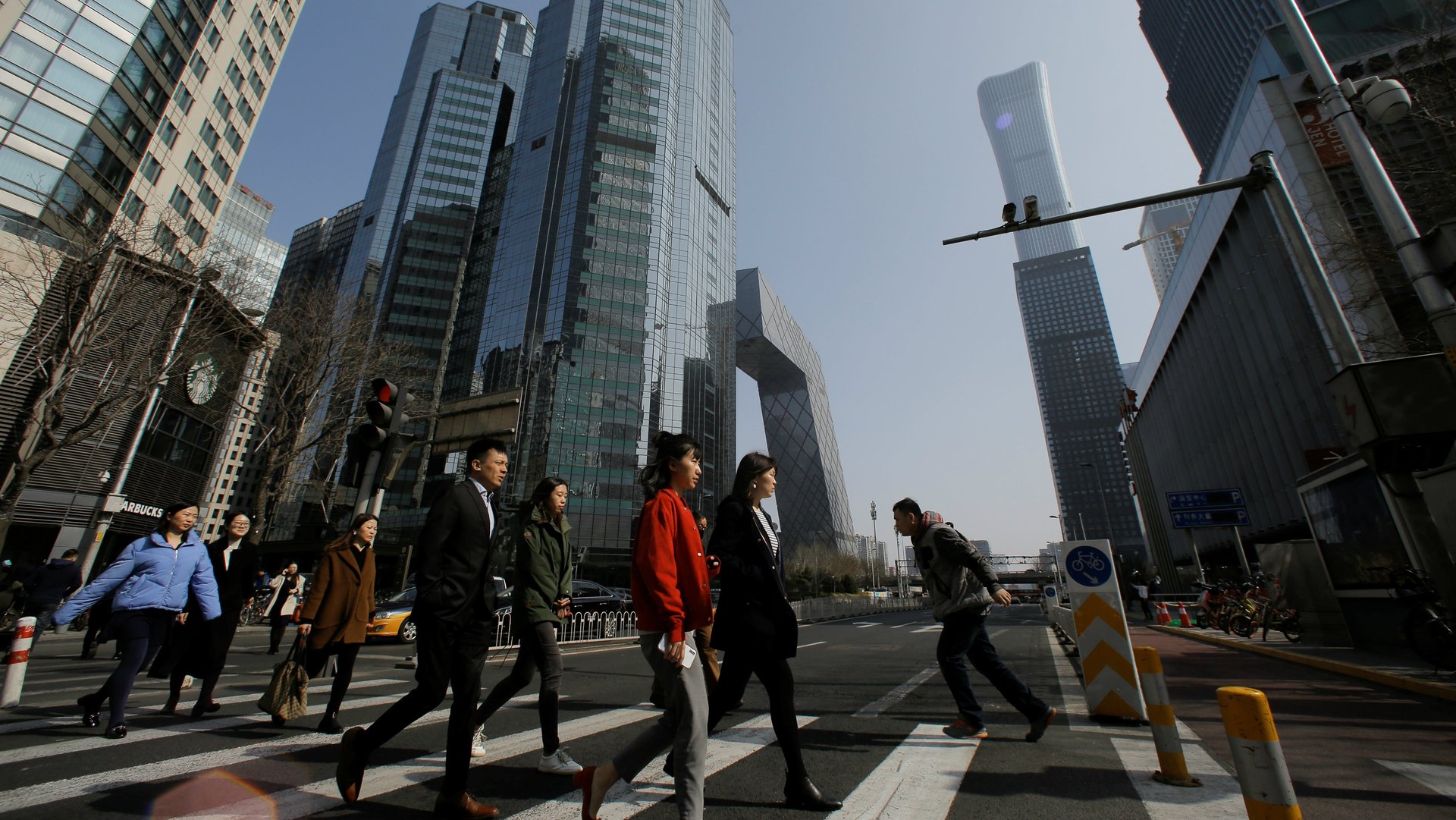What are zero-covid lockdowns costing China’s economy?
China’s 5.5% GDP target for 2022 is the least ambitious goal the country has had in three decades, but it’s already looking challenging in the face of ongoing lockdowns, and the Russian invasion of Ukraine.


China’s 5.5% GDP target for 2022 is the least ambitious goal the country has had in three decades, but it’s already looking challenging in the face of ongoing lockdowns, and the Russian invasion of Ukraine.
China’s continued zero-covid approach is “bound to pose another headwind to the already decelerating economic growth,” said a note from French investment bank Natixis in March, predicting that the sharp reduction in mobility in China could shave off 1.8 percentage points from its first-quarter growth, due on Monday (April 18).
For the year, China can achieve a growth rate of 4% to 4.5% if it can significantly improve vaccination coverage by the end of this month, added Natixis’s chief Asia-Pacific economist Alicia García Herrero. Though China has delivered enough doses to cover nearly 90% of its population, larger gaps exist for older groups or in rural areas.
Iris Pang, chief economist at Dutch financial firm ING, estimated last week that Shanghai will see its GDP shrink 6% if the current lockdowns persist through this month, which could translate into a 2% GDP loss for the whole of China. It revised its estimate for growth for the full year to 4.6% from 4.8% earlier.
The strongest warnings about China’s economy, however, have been coming from premier Li Keqiang. Li on Monday (April 11) said at a seminar that downward pressure on growth has intensified, and that local officials must move with “a sense of urgency” on stimulus measures such as infrastructure projects and tax reductions.
Lockdowns depress China’s factory activity
In March, China’s manufacturing activity slumped to a two-year low due to disruptions caused by covid prevention measures, as well as canceled export orders amid the uncertainty from Russia’s invasion of Ukraine, according to a monthly index by Caixin/Markit. “In Q1, manufacturing continued to lose momentum, while retailing got battered, even before lockdowns began,” said Shehzad Qazi, managing director of economic data tracking firm China Beige Book.
In the final month of the quarter, tech hub Shenzhen underwent a one-week lockdown, while Shanghai embarked on a two-part citywide lockdown on March 28 that remains largely in place. An April 3 analysis based on city-to-city trucking flows (pdf) estimated that putting an economic hub like Shanghai under a one-month lockdown would knock 2.7% off China’s GDP. For a two-week shutdown, that’s a loss of about $20 billion, according to a rough calculation. The city on Monday relaxed restrictions for districts with no new covid cases for two weeks, but much of the city is still under strict lockdown, and factory and port operations aren’t at full steam.
Meanwhile, factory prices rose 8.3% in March, more than expected.
Beijing’s tough economic choices
Beijing has been trying for years to shift away from debt-funded infrastructure investment and rely more on domestic consumption for economic growth. But zero-covid protocols could force it to fall back on old habits.
“To hit the target…one thing you can do is to stimulate the economy more but that will take the government further away from the de-leveraging, de-risking, and other policies which they want to pursue to try to rebalance the economy,” independent analyst George Magnus, former chief economist at Swiss bank UBS, told Quartz.
Local governments have pledged around $2.3 trillion for building projects this year, according to Bloomberg. Beijing has also announced plans for 400 billion in tax cuts for small businesses.
China hasn’t yet opted for demand-side stimulus, such as the checks sent out to individuals in the US, or Hong Kong’s consumption vouchers. Though retail sales grew more than expected in the first two months of the year, March will be a different story. In addition, China’s tech crackdown dealt a blow to the prospects and spending power of young people, including this year’s nearly 11 million upcoming university graduates.
“What is becoming clear is that China’s consumption growth will be decided almost entirely by covid policies for the foreseeable future, and any progress remains vulnerable to a quick reversal,” Qazi, of China Beige Book, told Quartz.